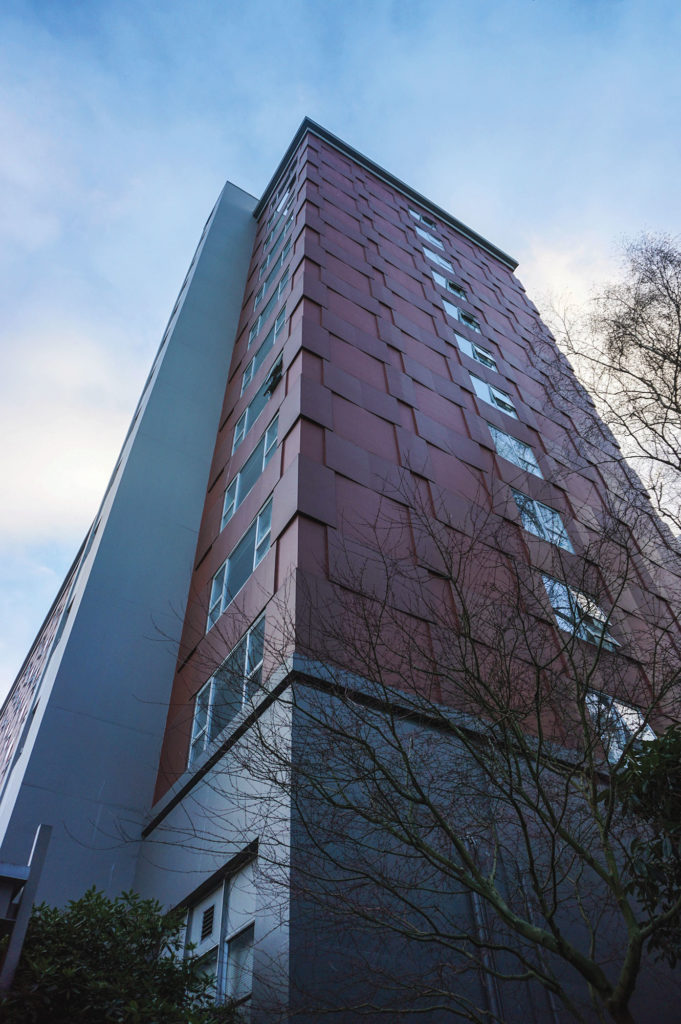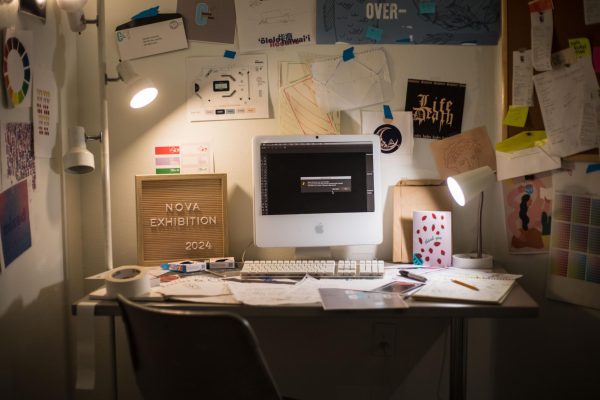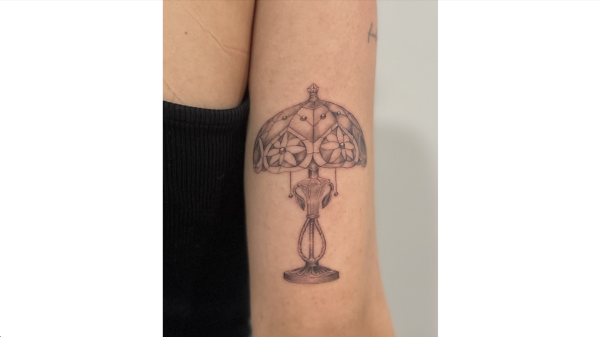Seattle U Community Reacts to Month-Long Online Learning Amid Omicron Surge
Winter quarter at Seattle University has started off the way the last one ended: online. Originally expected to be a week-long virtual period, the first day of the quarter began with an early morning announcement from President Eduardo Peñalver that in-person classes would not resume until Jan. 31.
President Peñalver wrote to The Spectator that the decision to continue virtual classes until the end of the month was made Jan. 3, a day before it was announced. The decision was made with heavy concern over the rise in COVID-19 cases within the Seattle U community that started around Dec. 30.
Peñalver noted that there were many considerations that were taken into account, including the increase in positive COVID-19 cases on campus and throughout King County, the effectiveness of vaccines in combating COVID-19 symptoms and how the public health experts’ requirement that those with positive cases quarantine for 10 days would pose “significant risks of disruption to the education process.”
“In deciding whether to remain online in January, we considered the educational experience of our students as well as the well-being of faculty, staff and students,” Peñalver wrote. “In making that assessment, we relied on our own expertise as educators as well as internal and external public health experts … we looked at the situation with the rapidly spreading Omicron variant as a choice between significant COVID-19 disrupted in-person instruction or remote learning.”
While the Seattle U community has been receptive to public health guidelines, the news is still frustrating for many. A predominant criticism of the move online surrounds the timing of the announcement, which has affected out-of-state and commuter students alike, despite residence halls and dining areas remaining open. Whether or not rollover credit will be given for meal plans or housing has not been decided, but President Peñalver states that this will “most likely” be similar to how it was done at the end of fall quarter.
“It was the right thing to do, but it does suck because they told us late,” said First-year Psychology major Passion Williams of the decision to go online. “I live in Portland, so I’m pretty close and could go home at any point, but I know many other students who [also] live out of state and it’s harder for them and it’s difficult because a lot of us were already here.”
First-year Political Science major Hyeri Shim finds the experience of having classes online shifting from one week to four to be disorienting.
“I just assumed that we would be going for one week, so I planned for that one week,” Shim said. “I [was going to] just stay home, but then once that announcement came, I was like, ‘Well, this is a bit frustrating,’ since now I have to plan for an entire month of online learning, so that has affected my scheduling. And since I am a local, it also affected my coming and going back to campus for the weeks.”
Students weren’t the only ones who found the news to be a let down. Yancy Dominick, a senior instructor in the Philosophy Department, expressed that although he supports the safety measures, he wishes Seattle U would have followed the model set by the University of Washington.
“To be honest, I was pretty disappointed,” Dominick wrote to The Spectator. “Zoom calls just can’t generate the same level of engagement and active discussion as in-person classes. I fully support the University’s efforts to keep our community safe, but personally I would have preferred the UW approach, where faculty were given the opportunity to decide for themselves whether their classes would be in-person or online for January.”
Perhaps the greatest disappointment of a month-long pause from in-person classes is the inability to effectively recreate a classroom setting over Zoom as well as the unavoidable fatigue that occurs from being on screens all day. Students and professors weighed in on the challenges that online learning presents.
“Being online is obviously really frustrating and really hard,” Williams said. “It’s harder to focus. You’re behind the screen all day. Sometimes your eyes hurt, you have headaches and it just makes it harder to interact with not only your professors but other students and have a connection.”
Michael Ng, an adjunct professor in the History Department, detailed his concerns about students’ morale as Zoom burnout looms, explaining that for him, this situation is less about a pedagogical transition but a matter of student mental and physical health.
“Part of what makes the teaching complicated is not by how I transition assignments, but also how do I keep you guys going?” Ng said. “My job is not just to be a professor, just passively teaching—we’re actively teaching and I am responsible for your pastoral care. All faculty are responsible for making sure that their students are doing well, not just in class, but checking in on your mental health and physical health—all of that. It’s a lot to deal with.”
Dominick acknowledges that teaching on “Zoom is very quiet,” but credits his students who have still made his classes “a joy so far this quarter.” He shares what he misses about having live in-person classes.
“In my experience, philosophy really comes alive when people gather and make noise together,” Dominick wrote. “I really miss asking students to quiet down at the end of a small group activity. In terms of adjustments, I had planned an in-class activity where students did some research in a philosophy database. In person, I could wander around the room answering individual questions and offering help. Dropping in on seven or eight breakout rooms just isn’t the same.”
First-year Science and Psychology major Iman Khawane relays that maintaining her mental health amid virtual classes is a balancing act between staying safe and having social interaction.
“Honestly, at first, there’s the perks: you’re in your room, you don’t have to be in the community and around people,” Khawane said. “But what I’ve noticed is after being in my room for quite some time, I would have to come to C-Street, which I’m glad is open, so I can socialize and see people to keep my mental health going. So I feel like somewhat still having the campus open has given me that balance. I honestly think I would be in a worse situation mentally if it wasn’t.”
Shim, who is a part of the Honors program in which all classes are seminar-based, finds that being on Zoom adds an extra barrier in instigating and navigating conversations as well as an increase in the amount of screen time.
“Since they are seminar classes, it’s definitely harder to go into a conversation and be comfortable with it and provide your opinion, because you’ll have to press unmute, and that in and of itself puts you on the spot, which I don’t feel comfortable with usually,” Shim said. “It’s also harder to stay motivated when you’re staring at a screen for one hour and 40 minutes or two hours. And the fact is that since we have to do work on a computer again, it’s just even more draining because you’re just spending all your time on a screen.”
Although most of the university is learning virtually, there are selected classes that are being done in-person. Second-year Nursing student River Smith has one of his classes in person and his second online. He explained his in-person experience amid the omicron surge, which involves double-masking and wearing protective eyewear.
“I’m not really that comfortable with it,” Smith said. “I know that there’s been at least six people among four sections [who] have tested positive … It seems like there’s no way to win because there’s skills you have to do in person like learning to take someone’s blood pressure … but at the same time, there’s this really serious virus that’s overwhelming the hospitals we’re training to work in, so it feels like we’re contributing to the problem of burnout and understaffing that’s plaguing medical institutions.”
Just a first few weeks into winter quarter, questions and anticipation still surround the approaching return date to in person instruction on Jan. 31, and whether virtual classes could be extended into February.
“I think we’re just going to have to wait and see for public health reasons, which makes a lot of sense,” Ng said. “The university is paying close attention to this because the data is changing all the time, but at the moment, I haven’t heard anything about us extending past the current period.”
Williams believes that classes will for certain be extended beyond January, possibly for the entire quarter.
“We’re 100% going to have online classes extended,” Williams said. “We can keep the faith, but unfortunately, they’re going to, and I think it’s best we understand that reality.”
Khawane differs in expectation and was more optimistic about a return at the month’s end, citing the effectiveness of last quarter.
“This last year has proven that we can adjust with being in person, so I do feel like at some point when the fear factor of contagion goes down, which I feel will be within the next few weeks, we’ll come back in person,” Khawane said. “I think Seattle U has done a great job with running COVID-19 testing. We did a great job last quarter. I feel like that’s something that we’ve seen that is attainable, and that will be attained again.”
It should be noted that according to multiple faculty members, including members within the academic assembly, many feel that online learning should have been extended to the entire quarter. This feedback was also recognized by President Peñalver, who noted that primarily students and parents would like to return to in-person classes.
At this time, President Peñalver assures that the current plan is to return to in-person instruction at the end of January, but cautions that “as we have learned from two years of dealing with COVID-19, we need to be alert to the constantly changing public health landscape and be prepared to adjust our plans accordingly if needed.”
Within the Seattle U community, there have been an array of reactions to a month-long online learning period, which does not come without struggle. It is difficult to forecast what comes next, but Seattle U remains committed to ensuring the safety and health of the community while also trying to bring back the college life atmosphere of in-person learning.











